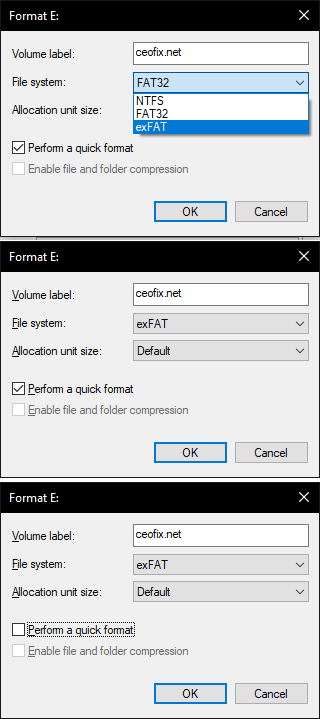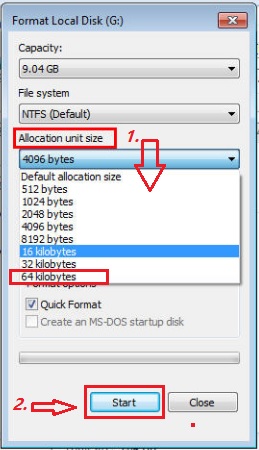

Ideal Use: Use it when you need bigger file size and partition limits than FAT32 offers and when you need more compatibility than NTFS offers. Limits: 128 petabyte (theoretically 2^64 bytes) maximum file size, 128 petabyte maximum partition size A FAT32 partition must also be less than 8TB, which admittedly is less of a limitation unless you’re using super-high-capacity drives.

Limitations come with that age, however. Individual files on a FAT32 drive can’t be over 4GB in size-that’s the maximum. Flash drives you purchase will often come formatted with FAT32 for maximum compatibility across not just modern computers, but other devices like game consoles and anything with a USB port. The big advantage is that because it’s so old, FAT32 is the de-facto standard. The FAT32 file system’s age has advantages and disadvantages. The name is short for “File Allocation Table 32.” It was introduced all the way back in Windows 95 to replace the older FAT16 file system used in MS-DOS and Windows 3. What Is FAT32? Jason Fitzpatrick / How-To GeekįAT32 is the oldest of the three file systems available to Windows. Ideal Use: Use it for your Windows system drive and other internal drives that will just be used with Windows. Limits: 128 petabyte (theoretically 2^64 bytes) maximum file size, 128 petabyte maximum partition size. And, if you have any drives where compatibility isn’t really an issue-because you know you’ll just be using them on Windows systems-go ahead and choose NTFS. If you have a secondary drive alongside Windows and you plan on installing programs to it, you should probably go ahead and make it NTFS, too. Your Windows system partition must be NTFS. Many of these are crucial for an operating system drive-especially file permissions. NTFS supports file permissions for security, a change journal that can help quickly recover errors if your computer crashes, shadow copies for backups, encryption, disk quota limits, hard links, and various other features. NTFS is packed with modern features not available to FAT32 and exFAT. The name is short for “New Technology File System.” NTFS first appeared in consumer versions of Windows with Windows XP, though it originally debuted with Windows NT. When you install Windows, it formats your drive with the NTFS file system. NTFS has file and partition size limits that are so theoretically huge you won’t run up against them. NTFS is the modern file system Windows likes to use by default.

What Is NTFS? Corbin Davenport / How-To Geek exFAT is a modern replacement for FAT32-and more devices and operating systems support it than NTFS-but it’s not nearly as widespread as FAT32.

FAT32 is an older file system that’s not as efficient as NTFS and doesn’t support as big a feature set, but does offer greater compatibility with other operating systems.


 0 kommentar(er)
0 kommentar(er)
